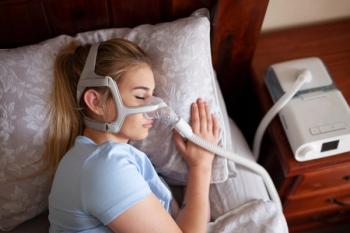
Ultrasound Safer Than MRI to Monitor Rheumatoid Arthritis in Pregnancy
Ultrasounds are a safer and equally effective diagnostic tool compared with magnetic resonance imaging (MRI) to diagnose and monitor pregnant women with suspected active rheumatoid arthritis (RA), according to a new report published in Radiology Case Reports.
Ultrasounds are a safer and equally effective diagnostic tool compared with magnetic resonance imaging (MRI) to diagnose and monitor pregnant women with suspected active rheumatoid arthritis (RA), according to a new report published in Radiology Case Reports.
Pregnancy plays a unique role in RA. In some pregnant women, there is a decrease in disease activity due to additional hormonal protection, while in others there is an increase in disease activity, characterized by flares or joint and cartilage degeneration, leading to higher rates of preterm delivery, cesarean section, and low birth weights.
Diagnosing and monitoring RA can be done through radiographs, ultrasounds, and MRI, all with capacity to detect active disease. Radiographs have been proven to have less of a role because of its limitations to detect earlier evidence of active disease. MRI, although highly precise, cannot be used in pregnant women due to the risk of toxicity from its contrasting agent, gadolinium. Compared with the downsides of these 2 diagnostic methods, ultrasounds have been the preferred diagnostic method in pregnant women.
In their study, Baffour et al demonstrate a real-world example of the role of ultrasound in pregnancy. A 29-year-old pregnant woman with juvenile idiopathic arthritis was maintained on etanercept (Enbrel), a tumor necrosis factor—α inhibitor. Because disease-modifying therapies may potentially harm the fetus, the patient stopped treatment 5 months prior in preparation for pregnancy.
At some point in her pregnancy, the patient reported joint swelling involving both wrists and her left ankle. Although she denied joint pain and stiffness and her laboratory values were normal, her rheumatologist suspected synovitis from her reported symptoms and an ultrasound was done. Upon examination, active synovitis was diagnosed in both her right hand and foot. There were also small erosions at the metacarpophalangeal joint as well as moderate hypervascular tenosynovitis at the extensor tendons. A diagnosis of RA flare was made, and the patient was given targeted steroid injections, which proved effective.
Active RA in pregnancy must be managed appropriately to prevent long-term deformities and joint destruction. In this patient, the use of an ultrasound led to early confirmation of active RA disease and resulted in effective therapeutic treatment with steroids. Because of its superior safety profile and comparable efficacy to MRI, ultrasounds should be the preferred tool when monitoring and diagnosing disease activity in RA for pregnant women.
Reference
Baffour FI, McKenzie GA, Bekele DI, Glazebrook KN. Sonography of active rheumatoid arthritis during pregnancy: a case report and literature review. Radiol Case Rep. 2018;13(6):1233-1237. doi: 10.1016/j.radcr.2018.08.027.
Newsletter
Stay ahead of policy, cost, and value—subscribe to AJMC for expert insights at the intersection of clinical care and health economics.







































